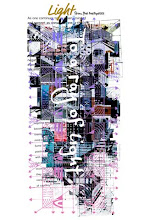Genesis in the Old Testament, a Jewish and Christian scripture, describes God's creation in seven days. Here, there is a story in Africa that the first men and women are made from soil and mud, and the heavens and the earth are created in a few days, which is similar.
Day 1 God created the heavens and the earth (that is, the universe and the earth first). In the darkness, God created light, day and night.
Day 2 God created the sky (heaven).
Day 3 God created the earth, the sea was born, and the earth was made to grow plants.
Day 4 God created the sun, the moon, and the stars.
Day 5 God made fish and birds.
Day 6 God made beasts and livestock, and made people who resembled God.
Day 7 God took a rest.
After that, God makes the first man ( Adam ) out of the soil, and then the woman ( Eve, Eve ) .
In the Dahomey Kingdom of Benin, Africa, Mau the Moon and her twin brother Lisa, the Sun, were considered as the androgynous Creator Mau Lisa. The worship of the gods here is largely unaffected by Islam or Christianity.
Mau Lisa ordered the universe before creating plants, animals, and humans. They perform this ritual in four days.
The first day was when Mau Lisa established a cosmic order, when she = he created humans from water and mud.
On the second day, the earth was made a place where humans could live.
On the third day, humans received sight, the ability to speak, and the ability to understand the world around them.
On the final fourth day of creation , Mau Lisa presented humans with technology.
Next is the creation myth of the Yoruba tribe of Nigeria in West Africa.
At first, it was the world's first damp, swamp-like chaos that was neither sea nor land. The supreme god Orodumare lives in the sky above it, and orders the great god Orisanla to create the world . He threw magical soil on a small ground. Orisanra went down to this chaos and began to prepare the chaos. He threw magical soil on a small ground. Then pigeons and hens began to scratch the magical soil and continued until the land and sea were completely separated. Orisanla took four days to create the land. On the fifth day, Orisanla took a break from his job.
Next is the creation myth of the Abalyans of Kenya.
Welle, the Supreme God, created the heavens, and the pillars supported everything around the heavens, just as the roof of the round hut was supported by the pillars. There Welle created two assistants. And Welle and his assistant put the moon and the sun But these brilliant two fought each other. At first, the moon knocks the sun out of the sky. Then the sun threw his brother down, "throwing him into the mud, and then the sun splashed the mud all over so that the moon was no longer a brilliant being. " Welle had to divide his hostile brothers and decide that the sun would shine in the day and the night would belong to the pale moon.
The next creations were clouds, lightning heads, stars, rain, rainbows "that God stopped the rain", air, and "cold air " that caused hail to fall. This was a two -day job.
Then the earth was created, with the first man named Mwamp and the first woman named Serra. Welle then filled the earth with animals, and the creation of the universe was completed in " six days."
A similar story of this Kenyan myth, where the sun and the moon existed together at first, and then the moon was mud to reduce its brightness, can be found in the Aztec mythology of Mexico.
The gods Nanahuatzin and Tecsiscatl are burnt to death. Eventually, from the east, Nanahuatzin revives as the sun god Tonatiuh. Shortly subsequently, Tēccizcatl also rose to the eastern sky and began to shine like Tonatiuh. gods thought that this would make the world too bright. There, a pillar of god ran and threw a rabbit at the face of Tecsiscatl. Then the brilliance of the injured moon was weaker than that of the sun, and the rabbit became visible in the full moon.
In this way, the story of the 7 -day Creation of the Old Testament is similar to African mythology, and it can be said that this is also one of the common symbols. In other words, the source is the same, and it has developed as a unique story in each place.





0 コメント